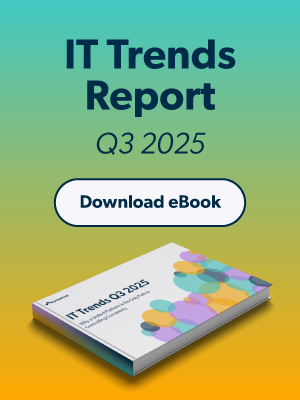Updated on February 14, 2025
Access control is a key part of modern cybersecurity. However, static access control models are not sufficient for modern, complex, and sprawling environments. That’s where Contextual Access Control (CAC) comes in—an approach that uses real-time context to decide who can access what.
This article explores the mechanics, benefits, challenges, and real-world applications of CAC, providing actionable insights for IT professionals and decision-makers looking to enhance their organizational security strategies.
What Is Contextual Access Control?
Contextual Access Control (CAC) is an advanced access control model that grants or denies access to resources based on real-time contextual factors such as user roles, location, device type, and time of access. Unlike static models, CAC dynamically adapts to changing circumstances, making it a flexible and highly secure solution.
Core Components of CAC
CAC relies on several contextual elements to make real-time access decisions:
- User Context: Factors related to the individual requesting access, such as their identity, role, and historical behavior. For example, a financial executive might have access to sensitive dashboards, while an intern would not.
- Environmental Context: Situational factors like location, device security, or the network used to request access. For instance, a request coming from a secure corporate office network might be allowed, but one from an unsecured public Wi-Fi could be denied.
- Session Context: Real-time conditions during the session, such as the number of concurrent access sessions, unusual access patterns, or changes in IP address mid-session.
CAC vs. Static Access Control Models
Traditional models like Role-Based Access Control (RBAC) and Attribute-Based Access Control (ABAC) define access based on pre-configured roles or static attributes.
While effective in many scenarios, these models lack the responsiveness required for dynamic environments. CAC enhances these models by integrating real-time data into decision-making processes, offering a more adaptive and risk-aware approach.
Features of Contextual Access Control
What makes CAC unique compared to traditional access control models? Its emphasis on dynamic decision-making and real-time security. Here’s what sets it apart:
Dynamic Decision-Making
CAC adjusts access permissions in real time based on current risk levels. For instance, a system might trigger additional authentication if an attempt is made from an unusual geographic location.
Integration with Risk-Based Models
CAC works seamlessly with AI-powered risk assessments to weigh the risk levels associated with a given context and make appropriate decisions.
Real-Time Monitoring
It continuously evaluates user activity and environmental changes, ensuring that access remains aligned with predefined security policies.
Scalability
CAC is well-suited for complex environments, such as hybrid workplaces, ensuring secure and adaptable control, even for large, distributed teams.
Benefits of Contextual Access Control
By evaluating real-time conditions, CAC minimizes the likelihood of unauthorized access, ensuring that only the right users, under proper circumstances, gain access. However, the advantages of implementing CAC extend beyond just security:
User Convenience
CAC often allows seamless access for low-risk scenarios while prompting increased security measures only when necessary—like requiring Multi-Factor Authentication (MFA) if a suspicious login session is detected.
Regulatory Compliance
CAC’s adherence to real-time monitoring and auditable policies supports compliance with regulations like GDPR, HIPAA, and PCI DSS, providing organizations with the ability to monitor and report on access activity effectively.
Flexibility
Whether managing remote teams or varying workload requirements, CAC adapts to changing organizational needs and user scenarios, supporting scalability over time.
Challenges of Implementing Contextual Access Control
While CAC offers significant advantages, implementation is challenging. Organizations wishing to invest in CAC should consider the following:
- Data Dependency: The effectiveness of CAC relies heavily on accurate, comprehensive data. Gaps in data collection or analysis could lead to misinformed decisions.
- Balancing Security and User Experience: Overly stringent policies may frustrate users, while lenient policies could expose the organization to risks.
- Integration with Existing Systems: Retrofitting CAC into legacy IT infrastructures can be complex and resource-intensive.
- Performance Impact: Real-time evaluations and continuous monitoring require robust systems to avoid latency or performance drops.
How to Implement Contextual Access Control
For organizations ready to adopt CAC, here’s a step-by-step guide:
Step 1: Identify Critical Resources and Contextual Factors
Begin by identifying the most sensitive systems, applications, or data in your organization that require robust, context-based protection. These could include financial information, intellectual property, or customer data.
Evaluate the contextual factors that influence security, such as specific device security settings, user roles, geographic access patterns, or time of access. Understanding these elements ensures you can tailor protection mechanisms to address the unique risks associated with each resource.
Step 2: Define Access Policies
Develop detailed and flexible access policies that leverage contextual parameters.
For example, restrict user access to sensitive data when they are using untrusted or public Wi-Fi networks, or limit access from high-risk geographic regions. Policies should also consider multi-factor authentication (MFA) for certain scenarios, like off-hours logins or access attempts from new devices.
Clearly defined rules ensure that access is both secure and seamless for legitimate users.
Step 3: Deploy CAC-Compatible Tools
Choose and deploy tools that are compatible with Context-Aware Control (CAC) strategies, such as JumpCloud or Microsoft Azure Conditional Access.
These tools enable dynamic evaluations of user access requests based on the context, such as the device security posture or the location of the user. Effective implementation of these tools can automate access control decisions and reduce the risk of unauthorized access while maintaining a smooth user experience.
Step 4: Monitor and Refine Rules
Context-based access control is not a one-and-done setup.
Continuously monitor user activities, access patterns, and threat trends to ensure your rules remain effective. Adapt rules as needed to account for changes in user behavior, new technologies, or emerging threats.
You should also conduct regular audits of your policies and tools to verify their effectiveness and compliance with industry regulations. Fostering an iterative approach will help maintain secure yet user-friendly access control.
Best Practices To Consider
- Start with High-Risk Areas: Focus initial efforts on securing high-risk systems or data to maximize the immediate value of CAC.
- Educate Users: Introduce CAC’s features and benefits to end-users to minimize friction and ensure smooth adoption.
- Conduct Regular Audits: Regularly review logged access activity to identify any misalignments in policies or areas needing improvement.
Real-World Applications of Contextual Access Control
CAC has proven itself invaluable across different organizational structures with diverse security and operational needs. Here are a few examples:
Remote Work
Organizations that rely on their employees working remotely can secure remote access by implementing policies that evaluate both device trust levels and geographic location.
For instance, access can be denied if an employee is attempting to log in using an untrusted, unsecured personal device outside of approved geographic locations. This ensures that sensitive company data remains protected, even as employees work from anywhere in the world, reducing the risk of breaches due to compromised or unverified devices.
Sensitive Data Management
Organizations handling sensitive data can enhance security and compliance by using CAC. This is achieved by verifying factors such as user roles and network location.
For instance, access can be restricted based on whether the user is an authorized employee or accessing the system from a secure network. These measures help protect sensitive information while ensuring that only authorized personnel can access critical data, especially in environments where data security is crucial.
Hybrid Work Environments
In hybrid work environments, organizations can implement dynamic permissions and device-aware authentication to provide employees with seamless, secure access to their tools, whether they are working from home, the office, or on the go.
These systems automatically adjust access levels based on factors like device type, security settings, and user location. This not only enhances productivity by minimizing disruptions but also ensures that sensitive data and systems remain secure across diverse working conditions.
Contextual Access Control represents a new era of access management, inheriting the strengths of traditional models like RBAC and ABAC while addressing their limitations with real-time intelligence. It ensures dynamic security without compromising user experience, making it an indispensable asset for organizations operating in today’s fast-paced, hybrid work environment.
Frequently Asked Questions
What is Contextual Access Control?
Contextual Access Control (CAC) is a security approach that grants or restricts access to resources based on contextual factors like location, device, time, or risk level, ensuring more dynamic and situational access management.
How does CAC differ from RBAC and ABAC?
RBAC (Role-Based Access Control) focuses on user roles, while ABAC (Attribute-Based Access Control) considers user and environment attributes. CAC builds on ABAC by incorporating real-time context, such as behavior or device security.
What are the benefits of Contextual Access Control?
CAC enhances security by adapting access permissions to real-time conditions, reducing risks from unauthorized access while improving flexibility and user experience.
What challenges arise in implementing CAC?
Challenges include integrating contextual data sources, ensuring compatibility with existing systems, managing complexities in real-time decision-making, and balancing security with user convenience.
What tools support Contextual Access Control?
Various IAM and directory platforms (like JumpCloud) support CAC by providing real-time contextual analysis, integrating with identity management systems, and automating access decisions using dynamic and conditional policy frameworks.





